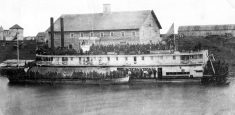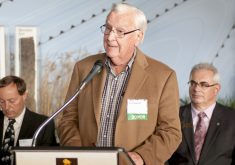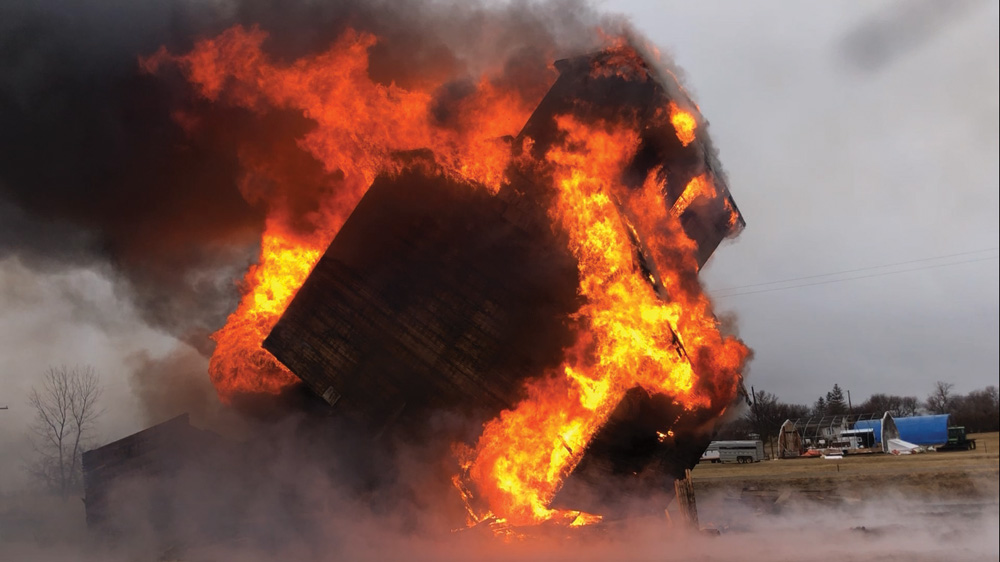Manitoba author Gordon Goldsborough is on the road again — this time to launch the sequel to his 2016 runaway bestseller Abandoned Manitoba.
More Abandoned Manitoba: Rivers, Rails and Ruins released in October contains photos and stories of more than two dozen sites he’s visited in the past two years.
Wherever he goes, there’s always more stories to tell, he told a recent Carman audience.
“I sometimes worry that I’m running out of good material,” he said. “Then just the other day someone contacted me and told me a really good story,” he said, with the emphasis on ‘really.’
Read Also

Do the math on replacement heifers
Beef farmers should know what it costs them to raise a replacement heifer and, based on that, decide the best replacement strategy to grow both their herd and their profits.
“I wanted to drop everything and go there.”
No doubt, he will.
Goldsborough’s curiosity has already taken him to remote and little-known places across rural Manitoba, his research unearthing intriguing stories about the places he visits.
Stories in More Abandoned Manitoba aren’t just about buildings we’ve neglected or forgotten, says its author. They describe these sites’ features, but also what caused them to be abandoned, and what that tells us about the past and present.
‘Abandonment’ stories are important stories, said Goldsborough.
“In each chapter there is a story about something that’s not just the place that’s no longer in use, but about the bigger phenomena that the place illustrates,” he said.
[AUDIO (below): Gordon Goldsborough on the importance of learning about rural Manitoba]
One chapter, for instance, describes three enormous metal-clad buildings along the railway in Killarney. Even locals don’t necessarily know what those buildings were once used for. His book explains how they were originally used as storage for processed flax fibre, and that chapter explores an era when large volumes of flax were grown here to be processed into paper.
In other sections, Goldsborough takes readers inside the building and the story of McKenzie’s Seeds Building in Brandon, and up to Gilbert Plains’ tiny ‘beef ring’ slaughterhouse. These are stories about the advancement of the seed-growing industry and how refrigeration changed the way we live. In other chapters he describes the ‘package farms’ of southeastern Manitoba, created as turnkey farm operations by an American land developer. One fascinating chapter describes the advancement of water and sewer systems, citing the location of a New Year’s Eve celebration in 1966, when Bowsman residents collectively torched their outhouses.
A map in the book illustrates what he’s coined Manitoba’s ‘Booze Belt,’ a pattern of liquor consumption across the province he ascertained after looking at RCMP reports of seizures of illegal stills. And that story begins at the epicentre of hard drinking in the Interlake — the now decaying Crabby Steve’s Dance Hall along Hwy. 7.
As the supplier of grain elevator photos to the Manitoba Co-operator, Goldsborough also devotes an entire chapter to this province’s last remaining wooden elevators, with another map showing past and present sites.
How his ‘abandoned books’ all began is a tale unto itself. It all started after his wife unearthed a 1912 licence plate buried in clean fill on their property, he said.

Goldsborough was so intrigued by the artifact, he did some sleuthing to identify not only the car’s original owner, but eventually mapping out car registrations across the entire province that year. That produced a fascinating story of car ownership and culture, and rising prosperity not just in Winnipeg but in towns and villages across Manitoba.
He’s already hinting there might be an ‘Even More… ’ book to come.
His publisher insisted he condense material in this 280-page book so he’s had to leave several intriguing tales out of this latest release.
What drives him to pursue this work is a desire to make sure these stories and what they have to tell us about ourselves today aren’t forgotten, said Goldsborough.
“Many people around the province of a certain age have recollections of places like old dance halls or one-room schoolhouses,” he said.
“But this is information that’s going to be gone in 10 or 20 years. I think it’s important we try to save it.”
Goldsborough is the head researcher, webmaster, and a past president of the Manitoba Historical Society. He is also a member of the department of biological sciences at the University of Manitoba as a water quality specialist concerned with the impacts of humans on wetlands and lakes.
His series “Abandoned Manitoba” on the CBC weekend morning show has been running since mid-2015.
Between now and December 7 Goldsborough is visiting a dozen rural communities to launch the book. A complete list of locations he’ll visit is found at the Manitoba Historical Society website.




















